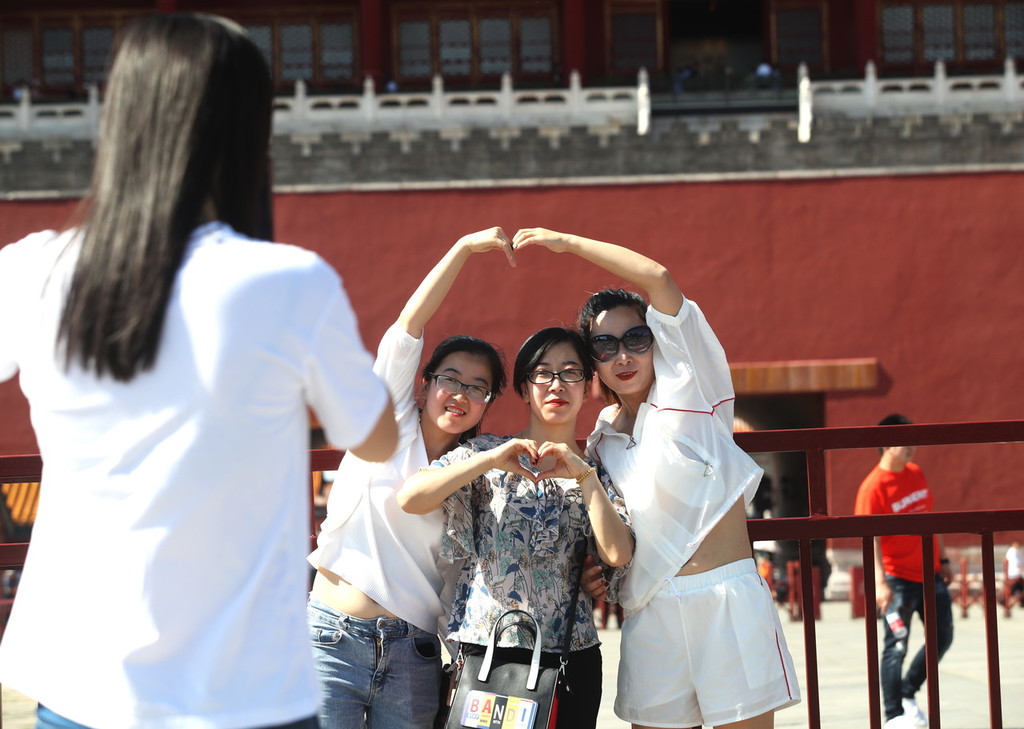
From the People's Daily App.
This is Story in the Story.
Working as a personal itinerary designer, tailoring tours to an individual traveler's demands, has become a popular job as customized travel catches on in China.
A report by the China Tourism Academy in late July said customized travel, which first emerged in China in 2000, has grown rapidly since 2016.
Customized travel is a tour product that includes services such as consultancy before the trip and hotel reservations and butler service during the trip.
Ctrip, an online travel agency in Shanghai, said customized travel reservations soared 180 percent year-on-year in 2018.
On top of that, self-driving tours have also become extremely popular in China.
Today’s Story in the Story looks at how customized travel options continue to grow at a rapid pace in China.

Young people enjoy a road trip on the weekend. (Photo: VCG)
Xiang Min, a 31-year-old from central China's Hunan province, chose to be an itinerary designer in 2016 after working as a tour guide for three years.
"I learned tourism at college and then worked as a tour guide after graduation," she said.
"I want to give more to the customers, provide a more interesting experience at the destination and also a human touch during the trip."
Xiang said customized travel is quite different from traditional tours.
"The traditional product is a kind of standardized one, while a customized tour is more private and diversified, designed on the basis of the traveler's hobbies and demands."
She designed a couple's customized tour to Australia in April to focus on encounters with animals. "We were told the wife loved animals and wanted to stay close to different animals on the trip, so we booked them homestays at farms and also hotels featuring the opportunity to feed animals-for example, a giraffe," Xiang said.
She said an itinerary designer is responsible for one-stop services for travelers before and during the trip, and also needs to review the trip afterwards.
"It's really important for the designer to keep learning about the destination and create travel plans that consider the customer's requests," she said.
Chen Lin, a 26-year-old from Yunnan province, said she enjoyed a great sense of accomplishment by working as an itinerary designer.
"I used to be a tour guide for groups of travelers before getting involved in customized travel in 2017," she said.
"I can feel the change … I used to regard myself as a saleswoman because what I had to do was to sell the standardized product to travelers. However, a more human touch is required to become an itinerary designer.
"We can even become very good friends with the customers as we know what they value and what they love as tourists, not merely selling them an average product."

Tourists pose for photos in front of the Palace Museum, also known as the Forbidden City, in Beijing. (Photo: Xinhua)
At the same time, the self-driving market is expanding. Chinese made 580 million self-driving trips across domestic destinations in 2018, a year-on-year increase of 35.6 percent, according to the China Tourism Academy (CTA).
According to data from the CTA, around 70 percent of domestic road trips in 2018 were excursions with a driving distance of no more than 200 kilometers and a travel period between two to three days. However, the number of long-distance and outbound self-driving trips saw growth in 2018.
The development and application of new technologies such as the mobile Internet, big data and artificial intelligence changed people's way of traveling and promoted the development of relevant industries, including car rentals, caravan manufacturing and campground development, said Dai Bin, head of the CTA.
The CTA predicts a continuous increase of self-driving trips in China.
Dai advocates more attention should be paid to environmental protection during road trips. He said that the massive usage of private cars, cross-country vehicles, caravans and recovery vehicles may cause greater impact on the natural and human environment, compared to hiking, cycling or bus tours.
"Associations, companies and travelers should pay more attention to protecting the environment during such trips," Dai said.
And by the way, itinerary designers also enjoy higher pay than tour guides, according to a report by Ctrip.
It said the average monthly income of an itinerary designer is about 9,000 yuan ($1,308), while senior designers can earn as much as 40,000 yuan a month.
(Produced by Nancy Yan Xu, Brian Lowe, Lance Crayon and Elaine Yue Lin. Music by: bensound.com. Text from China Daily and CGTN.)


